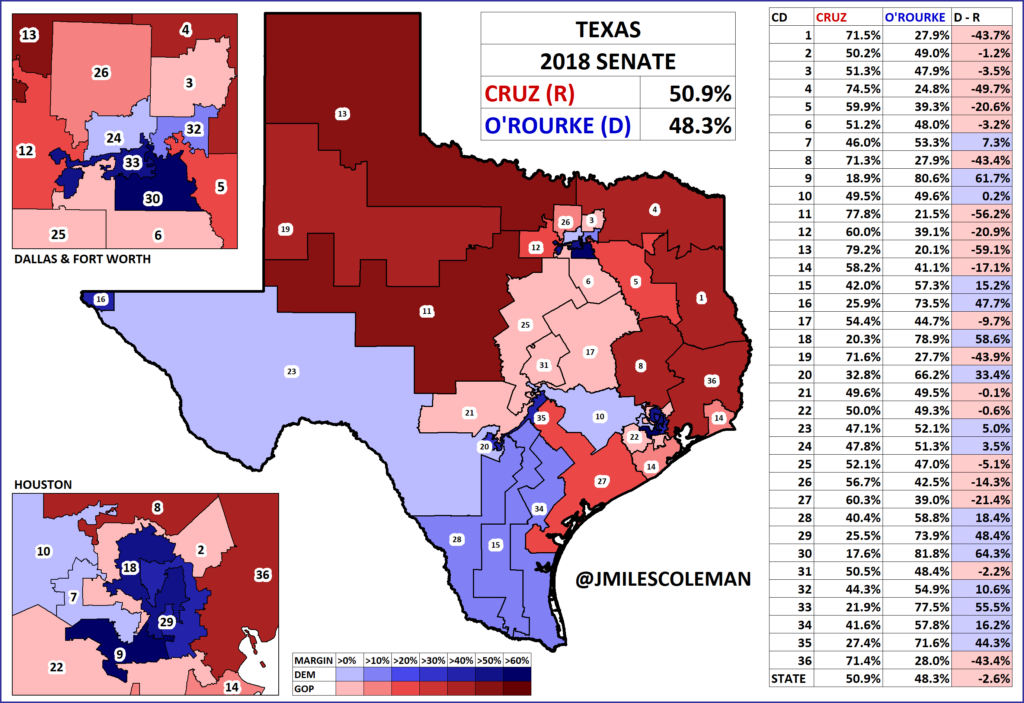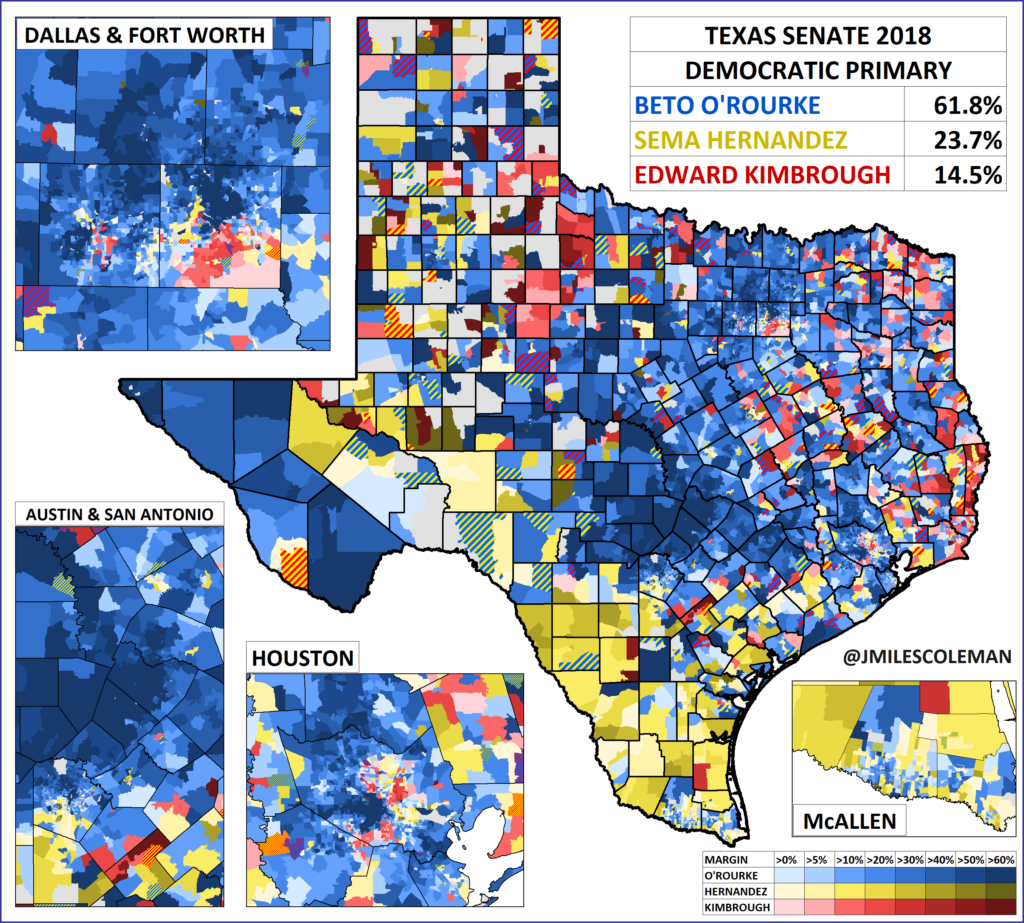Today, the already crowded field for the 2020 Democratic nomination grew as ex-Rep. Beto O’Rourke announced his candidacy. With O’Rourke entering the race, it may be worth looking at how he fared last year.
Elected to Congress originally in 2012, O’Rourke represented the strongly Democratic TX-16 (El Paso). After two easy re-elections, he ran statewide for Senate against Sen. Ted Cruz (R) last year. Despite Texas’ red hue, its drift to the left in 2016, coupled with Cruz’s polarizing reputation, provided an opening for Democrats in 2018. While O’Rourke ultimately fell 2.6% short of beating Cruz, he had the best showing for a Democrat in a Texas Senate race since 1988.
One of the most impressive things about O’Rourke’s run was that he received 168,000 more votes than Hillary Clinton in 2016, even as he ran in a lower-turnout midterm year:
Generally, O’Rourke’s gains came from the Austin area, as well as the suburbs of the major population centers. By contrast, he lagged Clinton in the urban core areas – such as Houston itself – as well as in the Rio Grande Valley. These redder areas tend to experience greater than-usual turnout drops in midterm years, but O’Rourke’s relative weakness with non-white voters will be something for Democrats to consider.
Breaking things down by Congressional District, he won 16 of the state’s 36 districts. Further, Cruz narrowly held districts like districts TX-03, TX-22, and TX-31, which all were typically darker shades of red:
Before the general election in 2018, O’Rourke faced two opponents in his primary; they provided at least a modicum of competition. He won the nomination with 62%, but his coalition was telling:
Aside from his El Pao base, O’Rourke put up the deepest shades of blue throughout the liberal Austin area, as well as the wealthier suburbs of Houston and Dallas. He did worse in wide swaths of the heavily Hispanic counties south of San Antonio, which went to Sema Hernandez. Likewise, you can see most of the majority-black precincts in urban areas voting for Ed Kimbrough (who was black himself). In the general election, O’Rourke’s similarly leaned heavily on the constituencies that provided his landslide primary win.
Overall, if the Democrats end up nominating O’Rourke, he’d likely be well-positioned to improve on Clinton’s gains with suburban and college-educated voters, while his ability to excite minority is looking like an open question.


